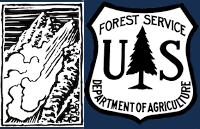Trip Planning for Dillon Area
Snow Observations-Dillon Area
We skied the NE bowl on Black Lion mountain in the East Pioneers. A solid refreeze overnight made for easy skinning in the morning. Despite the relatively warm ambient air temperature, moderate winds kept the snow cool above 9000'. Snow showers from convective activity started at 1300, with no accumulation. We saw several point releases on the steep east face, and the mostly filled in crown of a deep slab avalanche on the north face. Low elevation snow is virtually nonexistent and mid elevation snow is melting fast. Overall, conditions were good.
Full Snow Observation ReportRode around the pioneer scenic byway with the motorized avalanche fundamentals course.
At 8500 SW aspect there was 120cm snow ( see picture for structure) ECTP17, ECTP23 failing on large basal facets/ depth hoar 25cm up from the ground. New snow from February is 1/2 the HS.
As the afternoon warmed up we saw roller ball, small loose wet avalanches and shooting cracking from snowmobile tracks. At the end of the day we observed a very small avalanche on a road cut, also shooting from a track.
We did not ride much off trail, where we riding the snowpack was shallow and you could easily punch into the weak snow.
Full Snow Observation ReportDug in the snow with the Dillon Fundamentals course at Maverick today. Pit was NE facing Slope off Thin Air run @ 7770' When I stepped out of my skis I sunk all the way to the ground..
Snow was 90-100cm deep, with 45 cm new snow over a faceted lower half of the snowpack. Facets at 40cm above ground were 1-2mm and near the ground larger facets were mixed with wet depth hoar 4-5mm. We observed an ECTN22 @ 40cm on the smaller facets and an ECTP23 near the ground.
We avoided travel on solar slopes due to breakable crust, and mostly kept to the ski area. Did not observe any recent avalanches.
Full Snow Observation Report

